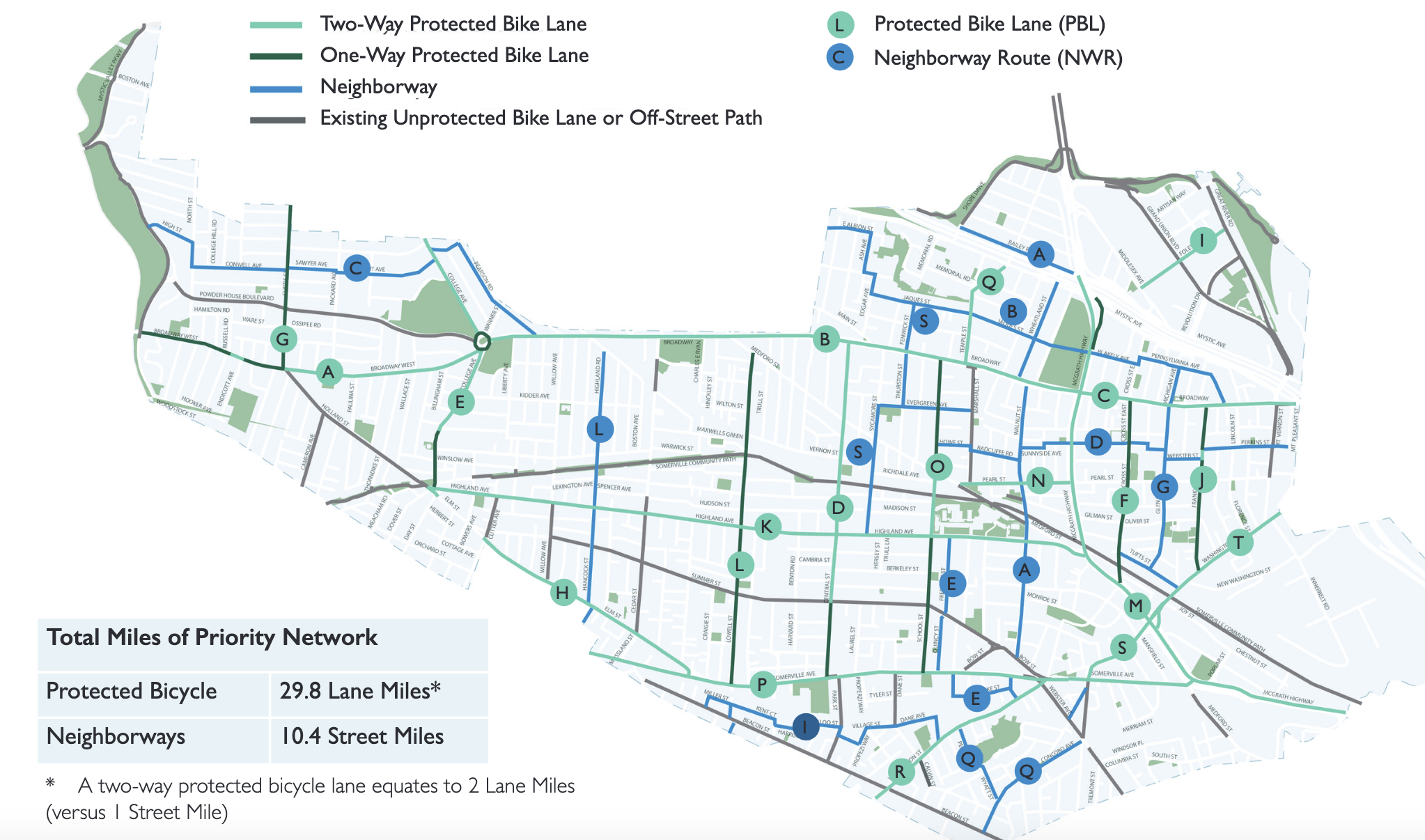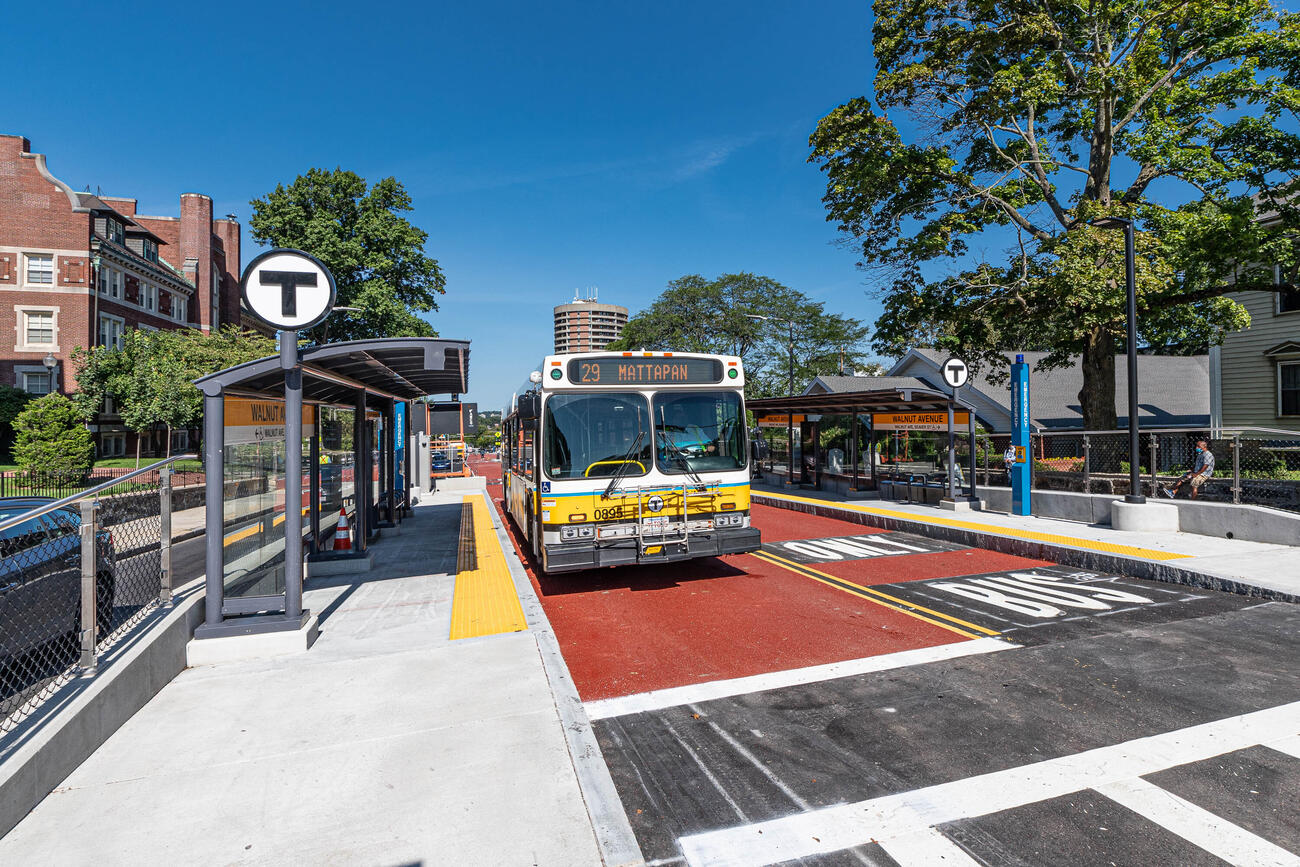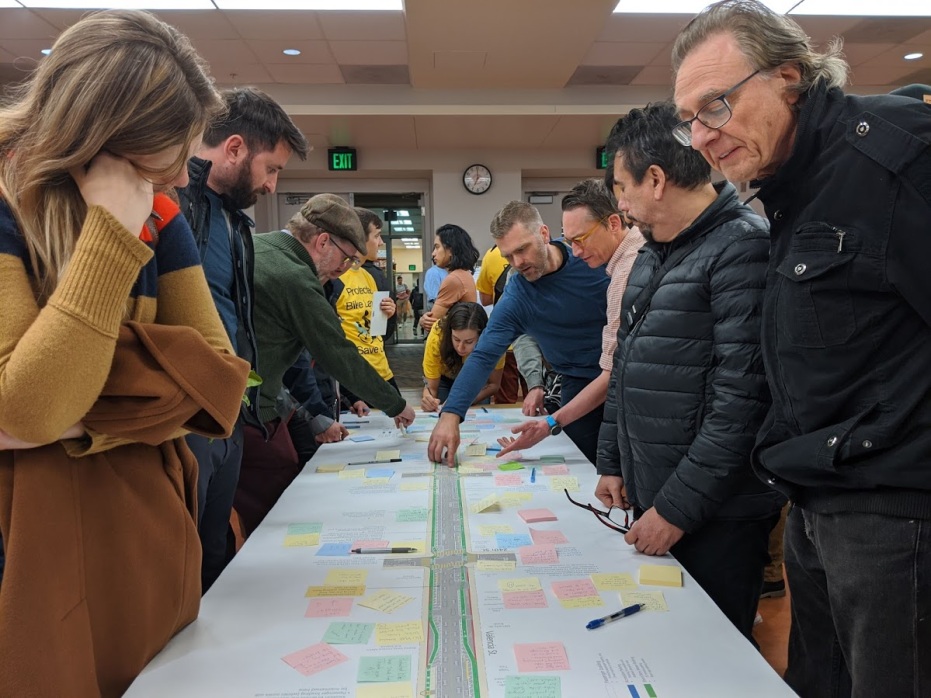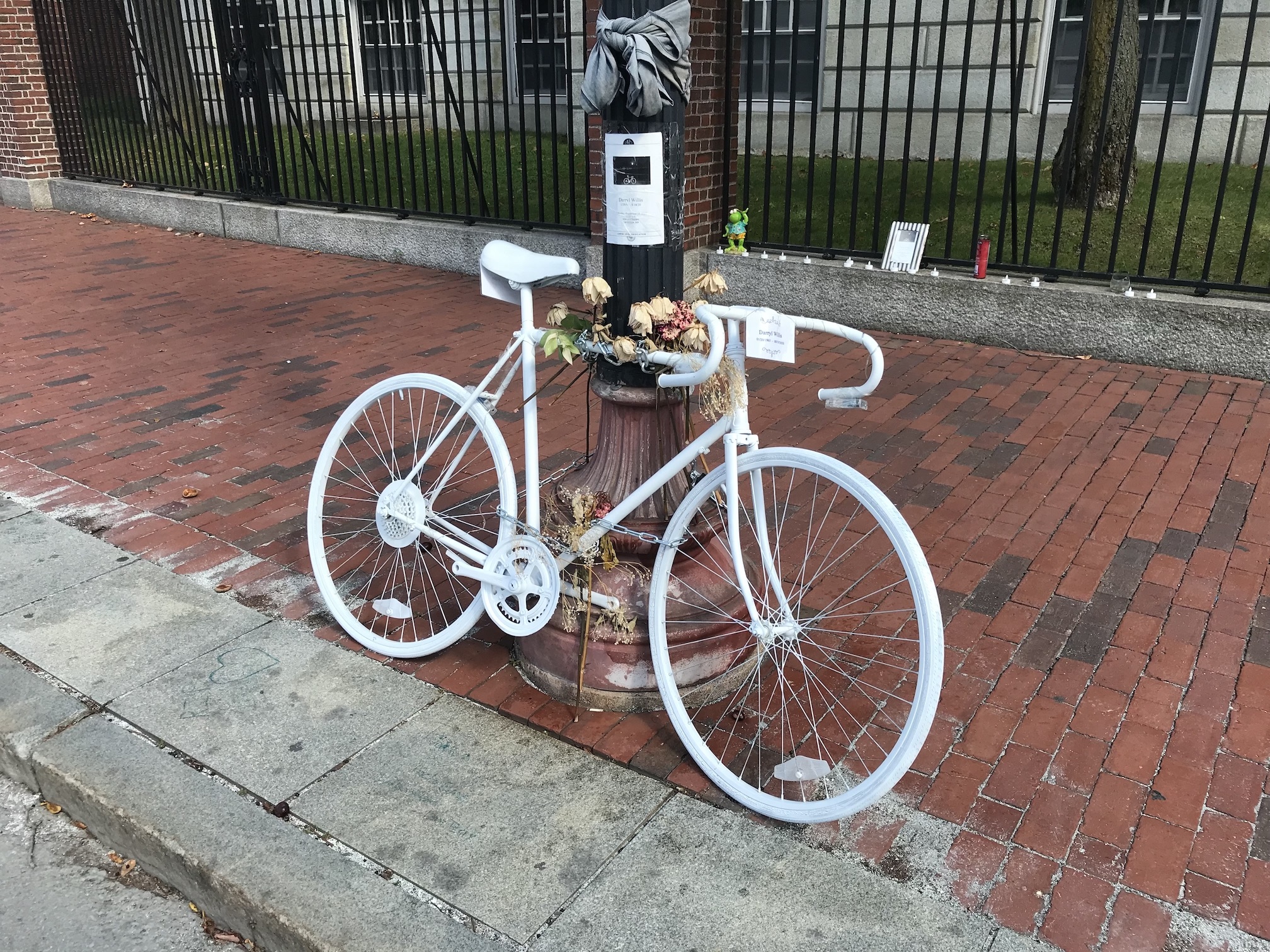Last week, the Somerville City Council unanimously endorsed a new Safe Streets Ordinance that will set a 2030 deadline for the city to build out a 30-mile network of new protected bike lanes across the city.
The city's new Safe Streets ordinance bears many similarities to the Cycling Safety Ordinance that neighboring Cambridge passed in 2020.
It requires Somerville's Public Works department and private developers to build bike infrastructure consistent with Somerville's bike network plan "whenever improvements are made to a public street."
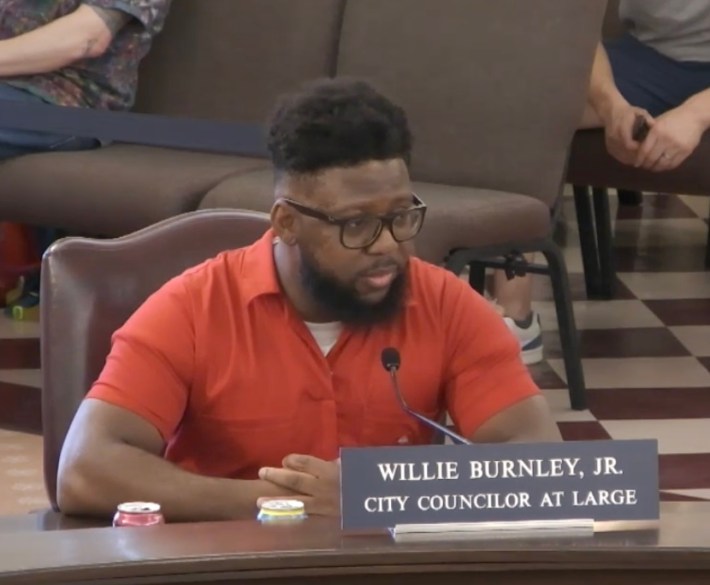
In the shorter term, the new ordinance also sets a deadline – December 31, 2030 – for the city to build out a 30-mile priority network (mapped above) of separated bike lanes on major streets.
The ordinance's lead sponsor, at-large City Councilor Willie Burnley Jr., said that the legislation follows "in the footsteps of Cambridge" but will also "go beyond what they did."
Not just for bikes
The new law borrows several concepts from Cambridge's ordinance, which was last updated in 2020.
Both laws share similar language that legally defines a "separated bike lane," set a deadline for their cities to install bike infrastructure, and define a public process for exemptions when the city thinks a planned infrastructure project is "impracticable."
But while the Cambridge law mandates the installation of about 25 miles' worth of protected bike lanes in a city of 7.1 square miles, the Somerville law requires 30 miles of protected bike lanes in a geographically smaller area of 4.1 square miles.*
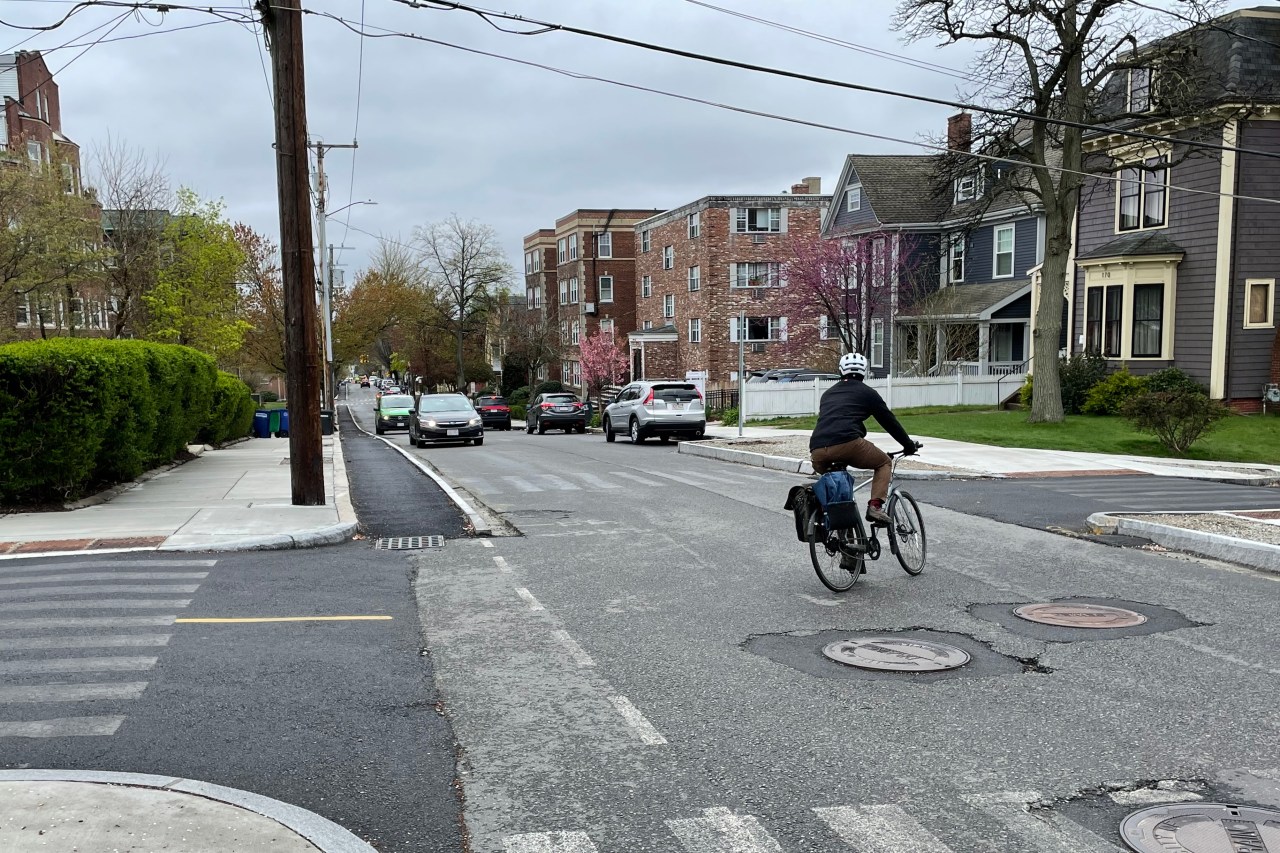
Another key difference: where the Cambridge ordinance is titled the "Cycling Safety Ordinance" and focuses on bike lanes, Somerville's new law also specifically mandates safety improvements for pedestrians and transit riders (although we should note that protected bike infrastructure on its own offers well-established safety benefits for other street users, particularly pedestrians).
The new ordinance declares that "the City of Somerville shall be obligated to meet the quantifiable goals for pedestrian and transit infrastructure" from its Vision Zero Action Plan and its Americans With Disabilities Act compliance plan.
Some of those goals include implementing, on an annual basis, "physical infrastructure improvements to at least two major intersections," building "permanent physical safety or accessibility improvements to at least one location within 1/4 mile of a rapid transit station," and rehabilitating "at least two miles of sidewalk."
Another key difference from Cambridge: unanimous Council support
At-large Councilor Willie Burnley Jr. introduced an initial draft of the ordinance in September 2023.
In the months since then, the proposal has been refined in collaboration with other Council members and city staff. The final draft earned a unanimous endorsement from the Council's Legislative Matters Committee at its May 28 meeting.
At the June 13 city council meeting, Somerville's City Council voted unanimously (with Ward Five City Councilor Naima Sait absent) to adopt the legislation.
"The ordinance that we have before us today is the culmination of years of hard work by advocates, and heartache from this community that has suffered too many losses of residents, of neighbors, of friends and family, to entirely unnecessary vehicular crashes," said Councilor Burnley at last week's meeting.
"Thoughts and prayers are not enough," continued Councilor Burnley. "As members of government we have a precious and crucial duty to do as much as well can to enact the kind of life-saving measures, the kind of traffic-calming measures that are necessary to ensure that every member of our community is safe when they leave their home."
Annual reports due in March
As in Cambridge, the new law requires city staff to start delivering annual progress reports on its work toward meeting the ordinance's deadlines, starting next March.
Several projects envisioned in the city's 2030 priority network are already underway this summer: a reconstruction of Washington Street between the Cambridge city line and Union Square will build new sidewalk-level separated bike lanes along most of that street segment, and new permanent, physically-separated bike lanes are also being built on Central Street between Highland and Summer as part of the city's Spring Hill sewer replacement project.
Read the complete text of the city's new ordinance here.
*Note: Both cities' ordinances define bike lane-miles in terms of directionality: two bike lanes running in both directions along a mile-long street counts as two lane-miles, while a bike lane that runs in only one direction on a mile-long street counts as one lane-mile. Thus the new separated bike lanes on Hampshire Street in Cambridge run 0.7 miles between Inman Square and Broadway, but because there are bike lanes in both directions, it created 1.4 new lane-miles of separated bikeways. As of April 30, Cambridge had installed 14.2 new lane-miles of new protected bikeways since May 1, 2020.
